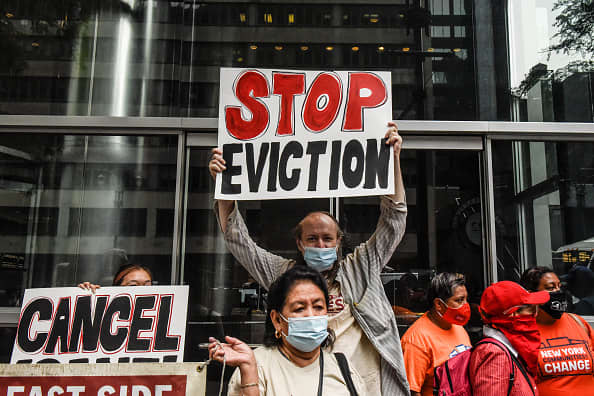Millions of renters are at risk of financial hardship as federal and state relief measures wind down.
That’s a new warning from the Consumer Financial Protection Bureau, which found that the pandemic-era safety net helped renters across the U.S. maintain stability during months of historic unemployment and uncertainty.
Now those protections are running out: The national eviction moratorium is over, few states are still banning the proceedings and the $45 billion in rental assistance allocated by Congress to address the crisis has been painfully slow to reach people.
Around 10.7 million renters remain behind on their rent, according to the Center on Budget and Policy Priorities.
The average debt in Maryland, where nearly 19% of renters are behind, is more than $4,500, according to data provided to CNBC by Surgo Ventures, a nonprofit organization focusing on health and data. The typical balance in California, where 15% of renters are not caught up, is closer to $5,200.
More from Personal Finance:
House Democrats’ plan would prohibit IRAs from holding private equity, hedge funds
The wealthy may avoid $163 billion in taxes every year
The stock market may be losing steam. Is it time to sell?
The present troubles for renters are explained in large part by inequities that predate the Covid pandemic, said Diane Yentel, president and CEO of the National Low Income Housing Coalition.
Indeed, around half of renters in the U.S. were cost burdened in 2019, meaning close to a third or more of their income went to their rent each month, according to the coalition.
“We have to recognize where we were before the pandemic, which was in the midst of a severe housing affordability crisis,” Yentel said.
Financial struggles were more common among renters than homeowners before Covid, the CFPB’s report shows.
Renters had an average credit score between 87 points and 106 points lower than homeowners. People who own homes are also less likely to have student loans and auto loans than renters.
Low-income workers, women and people of color are also more likely to rent than own a home.
“Past recessions and depressions have seen communities of color and low-income communities of all races and ethnicities left behind when the broader economy recovers,” said Dave Uejio, the CFPB’s acting director. “We cannot repeat that history.”
Yet many renters won’t be able to clear up their arrears until they receive the federal rental assistance, Yentel said.
“Even if by now they’re reemployed or have taken on a second or third job, many will continue to struggle just to pay their ongoing rental costs,” she said.
Meanwhile, tenants are still struggling to get the aid.
Less than $9 billion of the $45 billion in rental assistance has been spent, even though the funding was approved in stimulus packages passed in December and then March.
Advocates blame the troubled rollout of the funds on complicated applications and short staffing across the hundreds of organizations tasked with giving out the money.
“Delays have been brutal,” said Daniel Rose, an organizer at Housing Justice Now in Winston-Salem, North Carolina, adding that he knows of one renter who submitted her application three months ago and still hasn’t gotten an answer.
“It’s a form of psychological torture waiting for these bureaucracies to get their acts together,” he said.
Rose wasn’t surprised to hear from so many struggling renters during the pandemic though.
A study commissioned by the city in 2018 found a shortage of more than 16,000 affordable units for low-income people. Rents have only risen since then, while the minimum wage in North Carolina remains at $7.25.
“You can’t afford housing in Winston-Salem,” Rose said.
